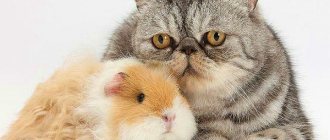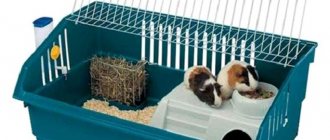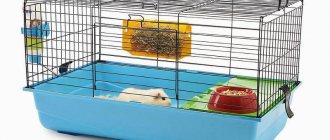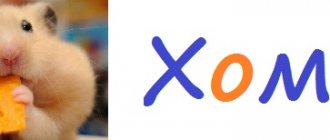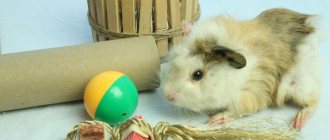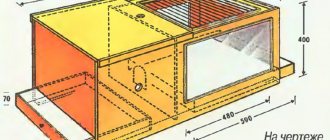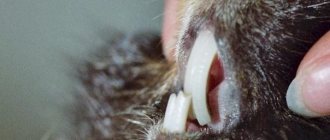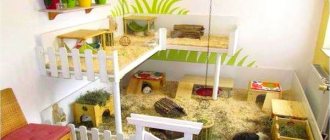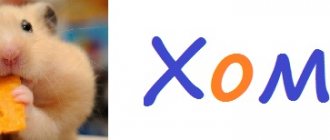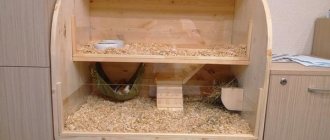Walking a guinea pig on a leash is not a Japanese exoticism, but a real picture that can be seen more and more often. A leash for a guinea pig is a simultaneous solution to 3 problems:
- The rodent grazes on fresh grass, allowing it to rummage in the ground and run around outside the cage. Fresh grass, sun and freedom are pleasures that will make your pet even happier.
- Eliminating the risk of escaping. Without a leash, a pig can scurry into the bushes and hide there. This happens when cats and dogs appear nearby.
- Reducing the risk of obesity. After the winter season of feeding cereals, pets gain weight. Walking around the yard or even around a large room will help burn off excess calories.
Types of leashes
A guinea pig collar similar to a dog collar should absolutely not be used. In these animals, the neck differs little in volume from the head and body. Therefore, if you make the collars loose, the rodents will either slide in front of it or pull their heads out of it. By tightening them tightly, you can strangle the animal.
To walk your pet, you should use special harnesses. They exist in three types:
Important! Before using the device, the animal should be accustomed to it. To do this, you need to put the leash on for a short time at home, gradually increasing the time the animal is in it.
Leashes are used to be able to use it to find an animal in the grass. Under no circumstances should you pull the animal behind you using force. Guinea pigs' spines are not as mobile as those of cats, dogs or rats. If you use force, pulling the animal towards you, you can easily injure your pet. A fracture of the spine threatens the animal with death.
Dangerous things
If you decide to have such a pet, it is worth knowing what toys are available for your guinea pig and which are strictly contraindicated for it. When setting up a cage, do not install a wheel in it under any circumstances. A pig is not a hamster, it is much heavier, its spine is not so flexible, and therefore the wheel can cause injury to the animal, the same can be said about walking balls that people like so much. Besides, the ball will simply be useless. The pig will not be able to see through its walls, as it is nearsighted. She will just sit in a cramped space, staring at the walls.
A leash for walking should be ignored, as it is as dangerous for the animal as a wheel. If the pig gets scared, it will begin to break free from its leash and squirm, which can lead to broken ribs or spine. This defenseless creature will never show that something hurts, even if it hurts very badly, so the owner may find out about the fracture too late, when it will no longer be possible to help.
Don't waste your money and don't buy chalk sticks to grind down your teeth. To do this, bring a soft twig from the street, or even better, give the animal more hard vegetables and fruits. Pig teeth are worn down without the help of pet store products, by biting and chewing hard food.
How to make a leash for a guinea pig with your own hands
It is not difficult to make such a device from strips or belts yourself. You just need to decide which option is most suitable for the animal.
Harness for guinea pigs with a jumper on the back made of straps
Before starting work, measurements of the volume of the animal’s neck and chest are taken.
Then the materials are prepared:
- strips of thick fabric, straps or material for making bag handles (you can use the hangers of old school backpacks);
- belt buckle with volume-fixing pin;
This is the type of buckle you will need to make a harness
- metal half ring;
- carbine;
- leash;
- thick sewing needle;
- strong threads.
The buckle can be replaced with a fastex type fastener. These are used in jackets.
Then the volume will be fixed - it cannot be reduced or added. But putting on the harness will be easier and faster.
Now we proceed directly to production. The step-by-step process looks like this:
- Cut strips of fabric or belt in length, making allowances for seams and fastenings of 4-5 cm.
- First, the front part of the device is made in the form of a regular collar, sewing a buckle to one edge of the smaller strap.
- At the second end of the belt, holes are made with which you can reduce or increase the volume of the collar.
- Using the described algorithm, the second part of the device is made from a longer strip - it is worn near the armpits.
- Both parts are connected by a piece of belt or thick fabric on the back.
- A half-ring is secured at the junction of the front part and the jumper.
- They put a carbine on it.
- Sew the guinea pig leash to the carabiner.
Jumper harness with wide second stripe
The manufacturing algorithm for such a device is identical to that described. The only difference is that a wide strip of fabric is pulled through the armpits. The clasp is made with buttons or a zipper is used.
This device is more convenient to use and less traumatic. But it is impossible to regulate the volume here. Therefore, as your pet grows, it will need to be replaced with a larger one.
DIY figure eight harness for guinea pig
Since in this device the straps cross on the chest and are fixed on the back, the animals cannot put their front paws under them or slip out.
Important! Correct volume adjustment will save your pet from troubles. It is necessary to make the straps so long that they do not squeeze the neck, but also do not allow the animal to jump out.
Before work, take measurements as follows:
- Apply a measuring tape to the chest at the level of the animal's front legs, strictly in the middle.
- They pass it through the armpit.
- Bring the tape to the middle of the back.
- They throw it over the same shoulder.
- Bring the measuring tape to the starting point.
The number of centimeters will be equal to half the measurements needed for cutting.
The materials and tools you will need are the same as in the previous master class.
- Measure out the strip with an allowance for fastening of 4-5 cm.
- A buckle is attached to one end, holes are made on the other.
- Fasten the strap.
- Twist it so that it rests on your stomach with the clasp.
This is what a figure eight harness looks like on a guinea pig. After fitting, a jumper with a half ring is made on the back or a half ring is immediately sewn on.
Figure eight harness for guinea pig
How to make a harness vest at home
This is the most convenient and safest option. But here the master will need tailoring skills.
- First you need to sew a vest for your pet from thick fabric. A half ring for a carabiner with a leash is sewn to it.
A harness-vest is the most convenient model for walking a guinea pig. Cut out the part from thick fabric with seam allowances.
Pattern for a harness-vest
When assembled, the vest looks like this.
Guinea pig harness
Harness-vest from an old sleeve
You can use the sleeve of an old sweater as a vest. It is enough to cut off a piece of the required length (measured from the neck and just below the middle of the body), cut out holes for the front legs, and process the edges so that they do not fray. If you know how to crochet, you can tie them with half-columns.
First, measure the circumference of the animal’s neck and chest. We add a few centimeters to the resulting number - we need a margin for seams. Sew the fastener to one edge of the fabric. Then we attach limiters to each strip of material, which will allow you to control the tension force. After this we sew on the second trident.
What we got should be connected with a “jumper”. Next, you need to fold and sew the edges around the material, having previously attached a half ring to it. The size of the jumper should be equal to the length from the pet’s neck to its chest.
Now is the time to make your own guinea pig leash: again, there is no need to buy one. An improvised loop will be made on one side of the material for fixing in the hand. On the reverse side, carefully sew on the carabiner, passing its edge through the loop. Then we fix the carabiner to the half ring and everything is ready.
In order for the first walk to be successful, we recommend that you familiarize yourself with the walking rules from our article “How to walk a guinea pig on the street.”
Cozy hideaway
As you know, guinea pigs simply love to hide. This is due not only to their timidity, the animal can just have fun. To create a truly popular shelter in which your pet will not only sleep, but also play, you should again take a simple cardboard box, put it upside down and make several moves in it. To make the pig feel more comfortable there, put more hay in the house, in which the “piggy” can burrow.
An old woolen hat stuffed with hay will work very well as a shelter. The pig will hide in it with great pleasure and will be able to chew to its heart's content in such a nest of fragrant hay.
Toys for guinea pigs in specialized stores are provided in a huge variety, including swings. But why spend money if you can build a hammock yourself, in which your pet will swing, climb on it, and even take a nap?
To sew a simple hammock, you will need two pieces of thick, triangular-shaped fabric; jeans or fleece will do. The two edges are sewn together to create the wrong side. It is necessary to turn the resulting triangle inside out and sew an edging tape to each edge so that fairly long ends remain, with which you can attach the hammock to the slats of the cage and adjust the height.
Pay special attention to the landing height; the pig should easily climb onto such a homemade swing. When sewing, take into account the size of the pet; it must fit completely into the hammock.
Toys for guinea pigs should be such that the animal can move more and develop muscles. A do-it-yourself tunnel is perfect for this purpose, since a store-bought one can be quite expensive. You will need to take a metal wire, make several rings of such a diameter that the pet can easily pass through it, and cover each one with thick fabric. Then the rings are sewn together with thick fabric at a distance of at least ten centimeters from each other. The tunnel can be attached with the outer rings to the slats so that there is a good exit, or it can be suspended from the top of the cage at a height accessible to the pig.
Types of leashes
The principle of a dog leash is completely unsuitable for rodents. The proportions of the head and neck of pigs are completely different from those of dogs, so a regular collar will either not be fastened enough, or, conversely, will be too tight, which can lead to suffocation of the animal. Special leash designs are provided for rodents.
- Harness. The leash consists of straps that are attached to the animal's neck and under the front legs, and on the back they are connected by a jumper.
- "Eight". The leash is a device that is formed by two loops. The loops are located on the shoulders of the animal. There are varieties of the “eight”, the loops of which are attached to the neck and under the paws. The leash can be adjusted with buckles or a lock.
- Vest. This is the most comfortable type of leash for guinea pigs if it is properly selected or sewn. It is attached in the same way as the first two types of leashes, with the difference that the fastening is not straps and laces, but a cloth made of fabric. The size of the vest is adjustable using adhesive tape, and there is a loop on the back for attaching a leash.
You can buy a harness for a guinea pig at pet stores, or you can make it yourself.
Benefits of walking
Veterinarians are divided on the issue of walking so many small animals. Some people think this is a bad idea, citing the high likelihood of the pig suffering psychological and psychological damage. Others counter with the factor of the benefits of fresh air for domestic rodents. Recently, popularity has shifted to supporters of active walks with guinea pigs - but with reservations.
Walking your pet in the average yard may not be a good idea. There is so much noise and traffic around that the pig can get psychological trauma. There is an even greater danger from other animals - street cats and dogs, who see such easy prey. They can do something irreparable. Therefore, you can only walk in quiet and peaceful places where danger is minimized.
At the same time, walks in the fresh air, the opportunity to run on the grass and chew on twigs to the fullest are very useful for guinea pigs. They may be domestic animals, but they are active and inquisitive animals. Their mood noticeably improves, which gives the owner positive emotions.
The benefits of walking a guinea pig include the following:
- These furry creatures are prone to obesity, despite their miniature size. Walking does not threaten them with this disease.
- Pigs are social animals; being confined to their own home can, oddly enough, depress them. Introducing such variety will help avoid stress in your mumps and its unpleasant consequences.
- A harness for a guinea pig is necessary - a guarantee that the animal will not disappear without a trace under the nearest bush.
If there are children in the family, a walk with your favorite pet will be a real adventure for them. Of course, you need to explain to them the rules of such a promenade in order to avoid incidents.
How to make a harness for a pig with your own hands
A leash in the form of a simple harness is easy to make. To do this you will need:
The first step is to measure the volume of the neck and the volume of the body under the front legs, as well as the distance between the attachment point on the neck and the withers of the rodent.
The first strap for the collar must be cut to such a length that it is enough for the fastener, that is, add about another 5 cm to the measurements. Then you need to sew on a buckle or clasp. The second fastening, which will be under the paws, is made according to the same principle as the collar.
Now a strap is sewn to the collar and the second fastening, which will be located along the back of the animal. At the junction of the second fastening and the strap, a ring for the carabiner is sewn. The harness for guinea pigs is ready.
There is another option for making harnesses that you can make yourself. It differs from the previous one in that a wide strip of fabric is used as a fastening on the chest. This fastening is secured with a zipper, button or other device. This type of harness is more comfortable for the rodent, but cannot be adjusted.
You can make a figure eight harness with your own hands. A cord is used for this. It is thrown over the neck and crossed on the animal’s chest. The ends of the lace are brought out under the paws and secured on the back. A jumper is sewn on the back between the fastenings and a loop for the leash is installed.
Another version of the “eight” is when the lace is not secured, but a lock is installed on it. Then the harness is adjusted depending on the size of the animal.
The eight-cut harness can also be positioned so that the loops contain not the pig’s head and body, but its shoulders. To do this, the strap is passed under the armpit of one paw, then the ends are crossed at the withers and passed under the armpit of the other paw. The loops themselves are connected by a jumper on the animal’s chest.
Friend for the "piggy"
As you know, pigs are very curious, friendly animals that need communication. If you do not want or more, then make sure that the pet has someone to cuddle with and play with. The pig's favorite pastime is dragging stuffed toys around the cage. The animal will happily gnaw on it and jump over it. But there is also a downside to such entertainment - you must constantly monitor the integrity of your plush friend, and if the stuffing begins to show through, it must be immediately removed from the cage.
You can make toys for guinea pigs yourself from scrap materials, and they will be much safer than store-bought ones. A soft friend made from an unnecessary sock and hay will cause a lot of emotions in your pet. To make it, you need to stuff an unpaired sock with hay or fresh grass. As the material is chewed, instead of dangerous cotton or plush stuffing, useful grass will come out, which the animal will feast on with great pleasure.
It’s a pleasure to make toys for guinea pigs with your own hands, and this activity will not take much time. The simpler the material, the better for the animal. And it doesn’t matter to him how much money was spent on entertainment, the main thing is safe fun.
How to sew a leash-vest
It is better to buy a leash-vest in a specialized store. But if the owners have sewing skills, then you can do it yourself.
To make a leash-vest, you must first sew a vest. It is made from a piece of thick fabric or from the sleeve of an unnecessary jacket. A vest is cut out of fabric. In shape it should look like a stripe on the back with a collar and belt. It is better to make the collar and belt adjustable. A buckle, Velcro or other fastener is used as a regulator. The edges of the vest are trimmed with braid or bias tape.
A loop or metal ring is attached to the back. An important point is that the leash should be fastened away from the neck, since in pigs the cervical spine is very vulnerable.
To make a vest from old clothes, you need to cut off part of the sleeve and cut holes in it for the paws. Then hem the edges to prevent further unraveling and you can crochet them. To prevent the vest from stretching, its edges are covered with tape. Before this, measurements are taken of the animal’s neck, the volume of the body under the paws and the distance along the back between the neck and withers. Fasteners or buckles are sewn onto the ribbons to make it possible to adjust the volume. A jumper is sewn between the edges of the product along the back, to which a ring is then sewn for attaching the leash.
You can make a leash for a guinea pig yourself. To do this, use a narrow sling or strap. A loop is made at one end for the hand, and a carabiner is sewn on the other.
Accessories for walking
There are many accessories that are used when walking. In specialized stores you can purchase:
- leash with collar;
- harness (made of loops or in the form of a vest);
- walking ball.
In a walking ball, the hamster will be able to safely move around the entire territory.
For street walks, you will have to choose between a harness or a regular leash with a collar.
Vests, which are available in different colors, a large number of models from various materials, are especially popular. It protects the animal from dirt and precipitation, securely fixing its body.
Recommendations for making a harness
To make a leash for a hamster with your own hands, you will have to familiarize yourself with the basics of sewing; such an accessory for walking should be bright, beautiful and comfortable for your pet. It is necessary to correctly take the measurements, transfer them to the fabric and realize your idea using hand sewing skills or using a sewing machine.
When deciding to make a leash with your own hands, you should consider some nuances:
- Use durable fabric and secure fastenings.
- Give preference to bright colors. If the hamster runs away while walking, you can quickly find it.
- The harness for a hamster should be made with a reserve (especially for young pets).
What available materials can it be made from?
When choosing material for making a dog bed, listen to the recommendations of experts.
- It should be a fabric that is comfortable for the dog. Especially careful selection of material is required for short-haired breeds. The pile should not cause irritation, the canvas should not be squeaky. Consider options that are resistant to abrasion, claws, and cleaning.
- For smooth-haired breeds, it is recommended to choose materials that accumulate and retain heat. These include flock, velor, plush, felt, corduroy. For dogs who prefer to sleep warm, you can make a bed made of faux fur, but this material should be avoided if the bed is being made for pets with allergies.
- For long-haired dogs, beds made of smooth but dense material, for example, linen, jeans, or tapestry, are suitable.
- Comfortable, warm and soft padding can be made from foam rubber, padding polyester, batting, or holofiber. Do not use fluff or straw, as they may harbor bacteria and insects.
- Try not to use synthetic fabrics; they accumulate static electricity and can frighten your pet. In addition, this material can cause allergies in the animal.
In addition to the above materials, when making a homemade bed, you will also need other tools: threads, scissors, pattern paper. All this is available in every home, and paper can be replaced with ordinary newspaper. Before drawing up a project and choosing material, it is worth studying the types of dog beds.
Pillow. Suitable for both large and small dogs. It is done quickly, simply stuffed with foam rubber or synthetic padding. Doesn't take up much space, you can just put it in the dog basket.
Lounger with side. It is a crib with “walls”. Sometimes it can be made from the above pillow, inserted into a base with sides. Plywood or corrugated cardboard is used as the base.
Little house. Usually created for small breed dogs. Requires a lot of time to manufacture. Sewing can be done by taking, for example, a box as a base. For warmth, you can line the inside with sheepskin or faux fur.
Wooden bed. This option is made for large breed guard dogs. A wooden bed is often installed on the street next to the booth or directly in the enclosure. A more complex variety. For manufacturing you will need wood, screws, a screwdriver and other tools.
Knitted clothes
If you are not comfortable with a needle and thread, but are great with knitting needles, then we hasten to please you - knitted clothes for dachshunds are easy to make and practical, just like those made from fabric. For this work, 200 g of any yarn of medium thickness will be useful: perhaps you have a ball lying around from a previously knitted scarf or sweater, or you purchased a warm woolen thread especially for this case. Here are some tips for creating a stylish sweater:
Start knitting it from the neck.
- On the back side, reduce the number of stitches to avoid the formation of folds and wrinkles.
- The sleeve knitting technique is similar to the technique for the fingers of gloves.
- Decorate the finished sweater with decor or add buttons.
The variety of yarn colors allows you to create not only clothes that are comfortable for your dachshund, but also a whole work of design art.
Advanced knitters can afford to give their pet a whole costume: a warm blanket or sweater and boots in case of particularly severe frosts. An evening of work will be fully repaid with doggy joy.
